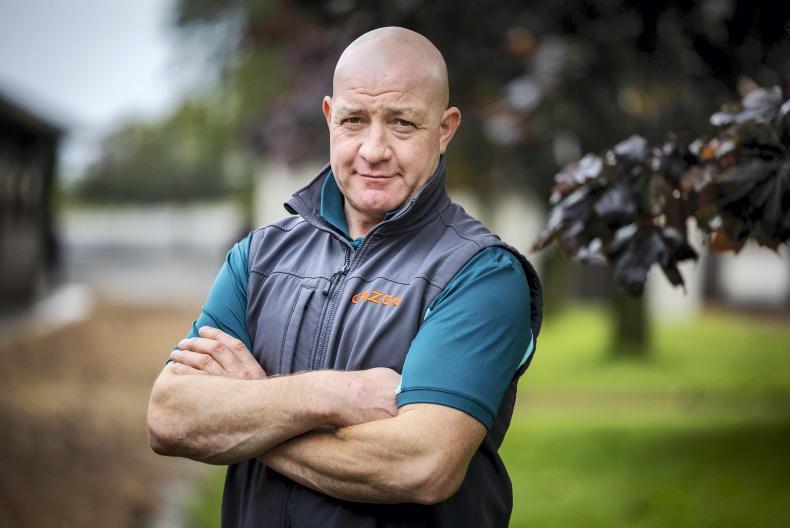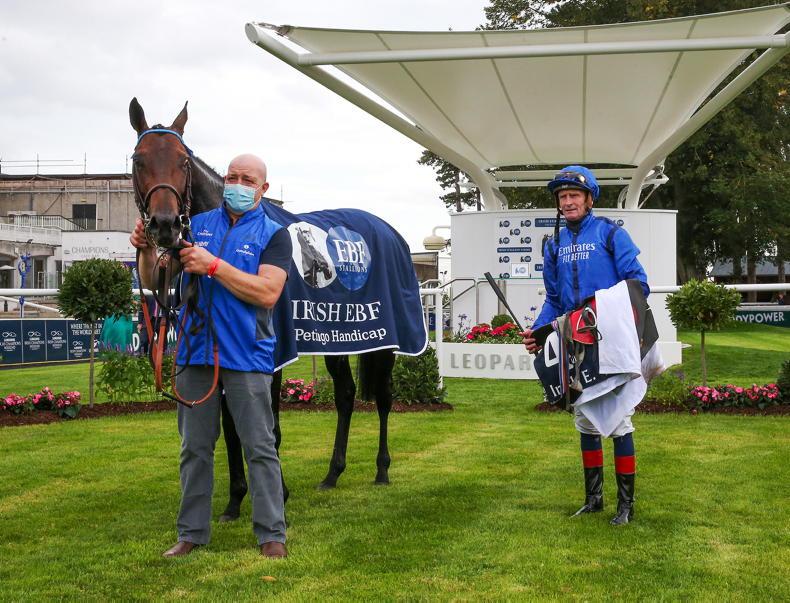NOT too many people can claim to have worked in the same job for most of their life, so I am certainly in a minority in that respect.
Aside from a short stint working construction, I have been with trainer Jim Bolger since I left school, over 30 years ago now. During that time, I have been fortunate enough to look after some champion racehorses and travel much of the world.
Our family home is located quite close to the Bolger stable but we had no direct involvement with racing.
My introduction came about via my father, who was employed as a handynman in the yard. He worked from nine to five, Monday to Friday, attending to everything from broken doors to tractor repairs. I would go in with him the odd time if I was off school or on holidays.
Then, at 12, I got a weekend job, which consisted of mucking out and putting horses on the walker. I had to start from scratch when it came to handling horses, as I had no experience whatsoever. Thankfully, the Bolger yard was full of very knowledgeable staff who were kind enough to take me under their wing and further my education. So, not only did I learn how to work with thoroughbreds, I learned from the best.
Taste of employment
Like so many before me, I hated school. Having had the taste of paid employment, I couldn’t wait to leave and go full-time. So, after returning to education and completing first year, I left and went to work for Jim Bolger.
For the first few years, I continued in the role of stable hand, mucking out and putting horses on the walker. During that time, I also learned how to ride a horse; eventually reaching the stage, where by the age of 20, I was riding seven lots a day.
That is certainly something that I consider to be one of my biggest achievements in life; coming in with no experience of any description and progressing to riding out at one of the biggest yards, not just in Irish racing, but world racing.
St Jovite
St Jovite was one of the first really good horses that I got to look after at home. Although I didn’t ride him out, I was responsible for his grooming and general wellbeing.
Pat O’Donovan (yard foreman) and myself also got to go racing with him. I led him up at Epsom when he was second to Dr Devious in the 1992 Derby and again, when he won that year’s King George at Ascot.
In between, I accompanied the horse to the Curragh, when Pat (O’Donovan) led him up in the Irish Derby. St Jovite put up an exceptional display that afternoon, reversing Epsom form with Dr Devious and setting a new track record in the process. His winning time stands to the present day, 30 years on.
It was a real privilege to be associated with such a champion racehorse; getting to see him at close quarters in his stable every day. While I have been lucky enough to look after other subsequent classic winners in the intervening years, I would rate him as one of the very best.
Irish Cesarewitch
I rode out Chirkpar and looked after him at home. He came to us from John Oxx, having won the Irish Cesarewitch on the flat.
Michael Smurfit bought the horse from the Aga Khan and sent him to Jim Bolger to go jumping. He won his first two starts as a four-year-old, before finishing second to Oh So Risky in the 1991 Triumph Hurdle at Cheltenham.
The following year, he won the Irish Champion Hurdle at Leopardstown under jockey Liam Cusack. Although no match for Royal Gait in the Cheltenham equivalent, he subsequently went on to win the Dennys Gold Medal Chase over fences.
Condor Pan, the horse who gave Charlie Swan his first winner at Cheltenham(1988 Bula Hurdle), was another smart hurdler that I used to ride out at home.
All over the world
My job with Jim Bolger has brought me all over the world - Kentucky, Longchamp, Newmarket and Hong Kong to name a few. Accompanying Thyer to the 1992 Kentucky Derby was a particular highlight, as was a trip to Hong Kong.
The Breeders’ Cup is one of the few big race meetings I have yet to attend but hopefully I can put that right at some stage. Last year was particularly satisfying for me, as two horses I look after, Poetic Flare and Mac Swiney, achieved classic wins.
The former was victorious in the 2000 Guineas at Newmarket in early May, while the latter beat him in a photo finish in the Irish equivalent three weeks later. I am not embarrassed to admit that I had tears in my eyes watching those two horses fight out the finish at the Curragh.
What made that race all the more special was that Rory Cleary rode his first Group 1 winner. Rory has been a huge part of the Bolger team for as long as I can remember, so it was fantastic to see him get his reward.
In between his two Guineas runs, I flew to Longchamp with Poetic Flare, where he finished sixth in the French version.
On that occasion, I travelled over alone but often, I will accompany the travelling head lad Ger Flynn and we will share the driving duties. I usually drive the two-box lorry when we have a larger number of runners at a particular meeting, or if we are represented at different meetings on the same day.
I lead the horses up and help to saddle them in their box. Given the long hours I spend travelling and time away from home, I am very lucky to have such a supportive wife, Trish.
Following his Irish Guineas second, I led up Poetic Flare at Royal Ascot, when he won the St James’s Palace Stakes. After the race, I got to meet and exchange a few words with Prince Charles and Camilla in the parade ring.
Boundless Ocean is the best horse that I have looked after at home this year. He won twice at Group 3 level ealier in the season but has since been sold to continue his career abroad.
Hurling is my other great passion outside of racing. I hurled with the local St Martins club from under-14, right up to senior level.
After breaking my ankle in a match, I had to give up both hurling and riding out. I later went on to manage the club to win county titles at both Junior A and Junior B grade. The latter team went on to win the All-Ireland Final, beating Rathkeale in the decider.
Hurling remains a great love to the present day and I follow St Martins and Kilkenny county teams at every grade.
Tom Agar was in conversation with John O’Riordan.


 This is a subscriber-only article
This is a subscriber-only article
 It looks like you're browsing in private mode
It looks like you're browsing in private mode






SHARING OPTIONS: